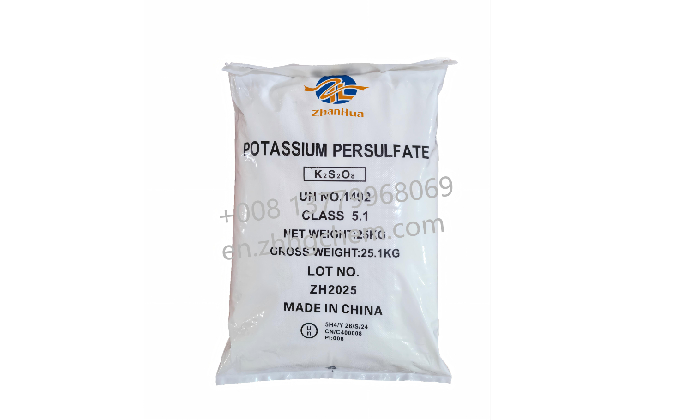Potassium persulfate, as an important chemical raw material, is widely used in high-end chemicals and fine chemical industries. Its purity and stability directly affect the application effect of products. So how do potassium persulfate manufacturers achieve high-purity production? At present, there are two main production processes in the market: the process using potassium hydroxide as raw material and the process using potassium sulfate as raw material. By comparing the advantages and disadvantages of these two processes, we can better understand how to balance cost and purity.

The production process using potassium hydroxide as raw material can effectively avoid the introduction of impurities and ensure high product purity due to the high purity of the raw material itself and the easy control of the reaction process. This process is particularly suitable for application scenarios with high purity requirements, such as analytical reagents and high-end polymerization initiators. In contrast, the potassium sulfate method has lower raw material costs, but the complexity of the process and the cost of purification may offset some of its advantages. In the production process, insufficient raw material purity or improper process control may introduce more impurities, leading to a decrease in product purity. For example, in the metathesis reaction of potassium sulfate and ammonium persulfate, incomplete reaction or impurity residue will affect the purity of the final product. Therefore, the potassium sulfate method has certain challenges in high-purity production.
Chemical stability is also an important indicator for measuring the quality of potassium persulfate. The potassium hydroxide method can produce potassium persulfate with a more stable chemical structure by accurately controlling reaction conditions such as temperature, time, and reactant ratio, while avoiding the introduction of impurities such as chloride ions that may affect stability, making the product less likely to decompose or deteriorate during storage and use. However, due to the greater difficulty in process control, the potassium sulfate method may lead to a decrease in product stability, such as accelerated decomposition rate, which affects its long-term storage performance. Therefore, the potassium sulfate method requires more refined process optimization to improve the chemical stability of the product.
In terms of particle morphology and particle size distribution, the potassium hydroxide method also has significant advantages. By adjusting the reaction conditions and subsequent treatment processes, the potassium hydroxide method can produce potassium persulfate products with regular particle morphology and uniform particle size distribution. Such uniform particle distribution is not only conducive to product packaging, storage, and use but also can improve its fluidity in practical applications and enhance use efficiency. The potassium persulfate produced by the potassium sulfate method may have irregular particle morphology and uneven particle size distribution due to the influence of reaction conditions, which affects the fluidity of the product and may even cause slow dissolution or incomplete dissolution during the dissolution process.
Metal ion residue is another key factor affecting the quality of potassium persulfate. The potassium hydroxide method can effectively reduce the metal ion residue in the product by selecting raw materials with low metal ion content and combining with efficient impurity removal processes. In contrast, potassium persulfate produced by the potassium sulfate method may have higher metal ion residues due to the possible presence of more metal ions in the raw materials and the greater difficulty of impurity removal treatment. Transition metal ions (such as Fe³⁺) can catalyze the decomposition of persulfate ions through electron transfer to generate sulfate radicals, leading to a decrease in product stability and affecting its performance in high-demand application scenarios.
As a well-known enterprise in the industry, Fujian ZhanHua Chemical has successfully achieved the production of high-purity potassium persulfate using potassium hydroxide as raw material through technological innovation and process optimization. Significant breakthroughs have been made in chemical stability, particle morphology control, and metal ion residue, with the content of metal ions such as iron and copper controlled at ≤5ppm, and the particle size uniformly distributed between 40-100 mesh. Its products not only meet the market demand for high-end potassium persulfate but also provide a successful example of high-purity production for the industry. This technological breakthrough has not only won wide market recognition for ZhanHua Chemical but also provided an important reference for the high-quality development of the entire potassium persulfate industry.
In summary, the selection and optimization of potassium persulfate production processes are the key to balancing cost and purity. By comparing the advantages and disadvantages of the potassium hydroxide method and the potassium sulfate method, it can be found that the potassium hydroxide method has obvious advantages in purity, stability, particle morphology, and metal ion residue. Through continuous technological innovation and process improvement, Fujian ZhanHua Chemical has successfully overcome the technical difficulties in the production process and achieved the production of high-quality potassium persulfate at a relatively low cost.